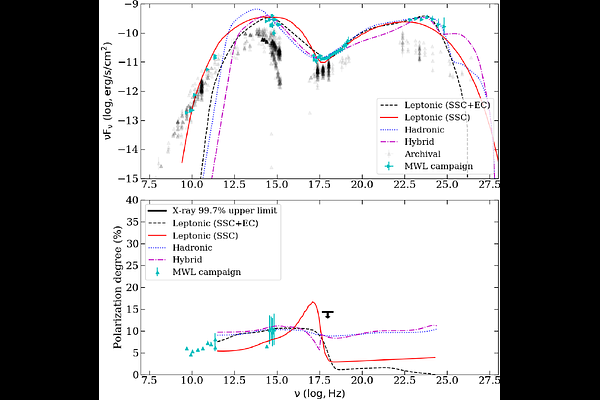Origin of the X-ray emission in blazars through multiwavelength polarization

Origin of the X-ray emission in blazars through multiwavelength polarization
Ioannis Liodakis, Haocheng Zhang, Stella Boula, Riccardo Middei, Jorge Otero-Santos, Dmitry Blinov, Iván Agudo, Markus Böttcher, Chien-Ting Chen, Steven R. Ehlert, Svetlana G. Jorstad, Philip Kaaret, Henric Krawczynski, Abel L. Peirson, Roger W. Romani, Fabrizio Tavecchio, Martin C. Weisskopf, Pouya M. Kouch, Elina Lindfors, Kari Nilsson, Callum McCall, Helen E. Jermak, Iain A. Steele, Ioannis Myserlis, Mark Gurwell, Garrett K. Keating, Ramprasad Rao, Sincheol Kang, Sang-Sung Lee, Sanghyun Kim, Whee Yeon Cheong, Hyeon-Woo Jeong, Emmanouil Angelakis, Alexander Kraus, Francisco José Aceituno, Giacomo Bonnoli, Víctor Casanova, Juan Escudero, Beatriz Agís-González, Daniel Morcuende, Alfredo Sota, Rumen Bachev, Tatiana S. Grishina, Evgenia N. Kopatskaya, Elena G. Larionova, Daria A. Morozova, Sergey S. Savchenko, Ekaterina V. Shishkina, Ivan S. Troitskiy, Yulia V. Troitskaya, Andrey A. Vasilyev
AbstractThe origin of the high-energy emission in astrophysical jets from black holes is a highly debated issue. This is particularly true for jets from supermassive black holes that are among the most powerful particle accelerators in the Universe. So far, the addition of new observations and new messengers have only managed to create more questions than answers. However, the newly available X-ray polarization observations promise to finally distinguish between emission models. We use extensive multiwavelength and polarization campaigns as well as state-of-the-art polarized spectral energy distribution models to attack this problem by focusing on two X-ray polarization observations of blazar BL Lacertae in flaring and quiescent $\gamma$-ray states. We find that regardless of the jet composition and underlying emission model, inverse-Compton scattering from relativistic electrons dominates at X-ray energies.